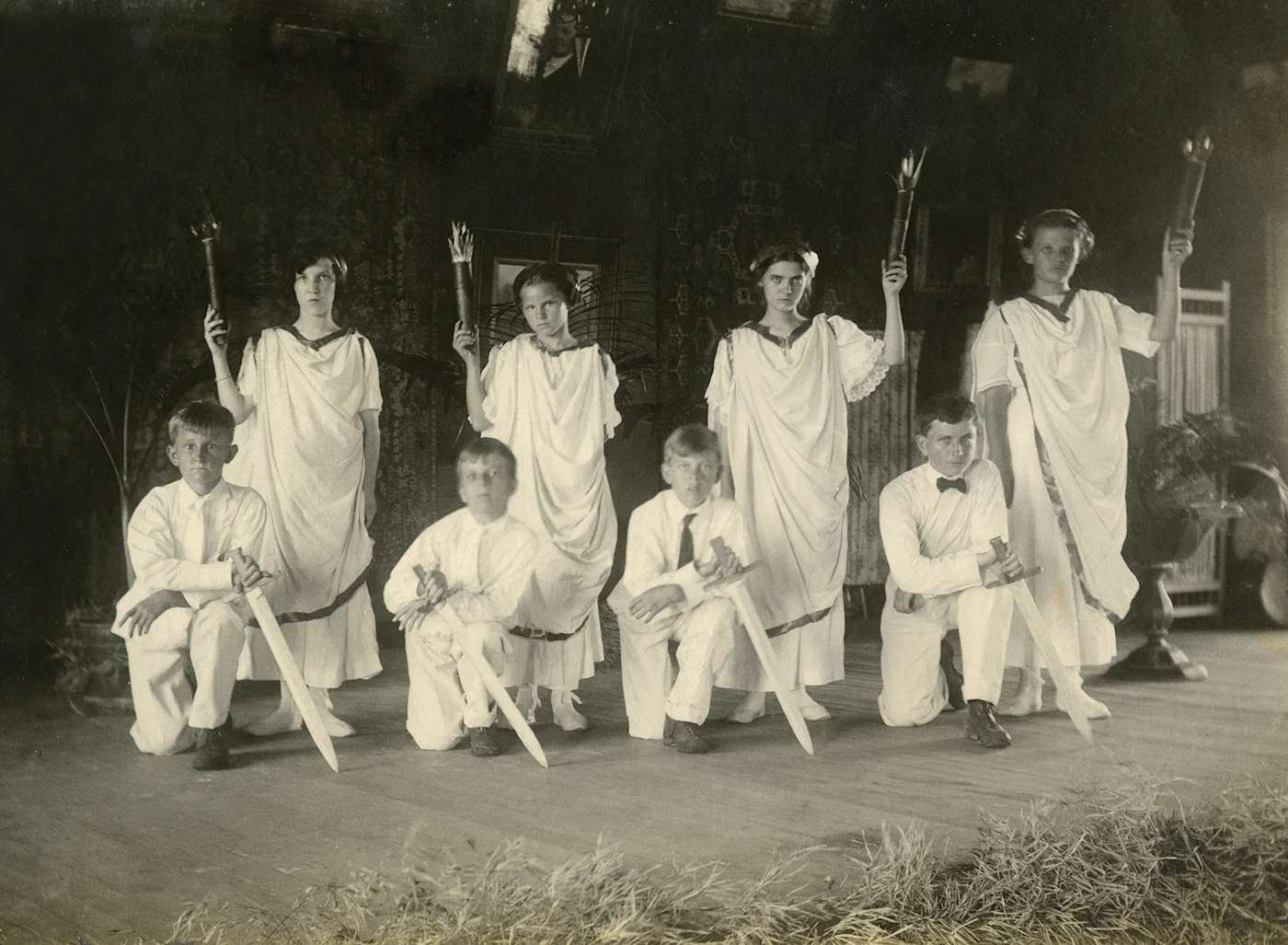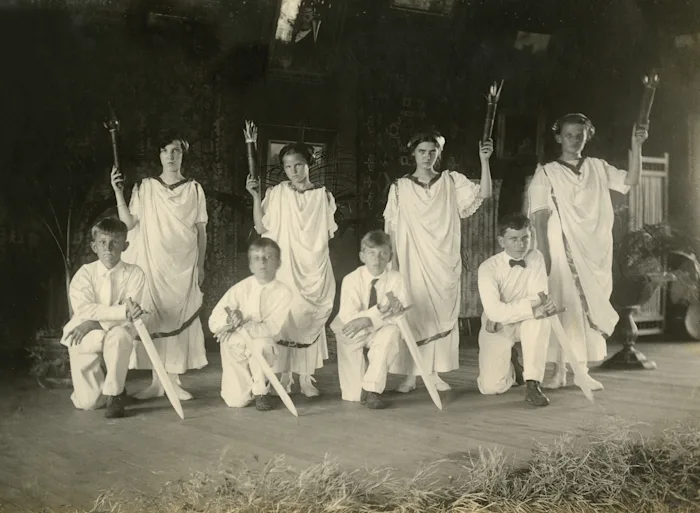Demolish Right Wing Culture
Andrea Cavalletti
A child prodigy in the fields of mythology, Egyptology and philosophy, Furio Jesi composed his first book at age fifteen. A true heir to Walter Benjamin, he put his immense erudition to use analyzing revolts. In the following interview, Lundi matin speaks with Andrea Cavalletti about Jesi’s late work, Right Wing Culture, which analyzes the roots of fascism and Nazism in order to understand their contemporary manifestations.
Other languages: Español, Français, Italiano
Cultura di destra [Right Wing Culture] is the last book published during Jesi's lifetime. Several concepts Jesi forged in his other works also make their appearance here, notably that of the “mythological machine,” which functions as an original method for understanding the mythologies of the right. What is this “mythological machine” and how did Jesi construct his method?
The term refers back to Jesi’s 1973 essay, La festa e la macchina mitologica, or “The Festival and the Mythological Machine” - that is, to the definition of his best known “gnoseological” model: the “mythological machine.” What is in question is an apparatus that, despite the fact that we only see it from the outside, alludes to the presence of “Myth” inside of it, concealed inaccessibly behind its impenetrable walls. The machine functions by generating narratives or testimonies that it invests with meaning, or what we call mythologies. “In its functioning, it refers constantly to the nourishment of myth, which however always remains inaccessible. What is offered in its place is mythological nourishment.” We might perhaps compare this model to Foucault’s account of the Panopticon, where the presence of the guard inside the tower remains unverifiable. Only in this case, the walls of the Jesian model are made out of mythologies.
As for right-wing culture more precisely, Jesi claims it is a product of that mythological and linguistic mechanism he calls “ideas without words.” The latter refers to a linguistic circulation that “requires non-words,” that employs stereotypes, ready-made phrases, and catchwords not simply out of ignorance, but also because it is this poverty of vocabulary and syntax, their obvious insufficiency, that makes it possible to allude to something that remains fundamentally incommunicable. The litany of commonplaces, superstitions, and prejudices that imply or make reference to this secret dimension must be understood and situated within the perspective of a truth that is only ever presumed, and which must precisely remain unexpressed. It is by remaining elusive that a shared truth is established between speaker and listener. It is because it refers to the unverifiable that the language of non-words can gather circles of adepts around it, since it acts purely at the level of hearsay. For instance, those who believe in the Protocols of the Elders of Zion care little about their authenticity. The conspiracy need not be a proven fact, but merely a plausible possibility (hence the comparison with the presence of the prison guard for Foucault). This is why to declare the non-existence (or the falsity) of what the machine purports to contain (a book, a document, news, facts) is to fall straight into its trap. To declare that its content is not real would only confirm its mythical essence, which acts precisely by not being there, by remaining unverifiable. Jesi teaches us not to fall into this trap, but instead to study the functioning of the mythological machine, to catch it in flagranti and expose it. Only by studying it in this way can we avoid setting the apparatus in motion, lest we ourselves become adherents of “right-wing culture.” In short, it is the only way to avoid being a fascist.
Right Wing Culture gathers two articles Furio Jesi published in 1975 and 1978. What led Jesi to collect these texts in the form of a book? What does he call “right-wing culture”?
What is it that pushes the mythologist to specifically study right-wing culture? In fact, the first sentence of the book touches on this question: “it is impossible,” he writes, “to devote so many years to the study of myths and mythological materials without frequently encountering right-wing culture along the way, and sensing the need to confront it.” In 1964, Jesi was already studying right-wing culture, that is to say, culture operating through a form of “manipulation” or “technicization” (Kerényi) of myths. At the same time, he recognized that certain limits in the way mythological science itself was practiced (including by his teachers) served as barriers that safeguarded bourgeois culture. Influenced by an awareness that all intellectual knowledge inherits instruments and materials that are neither neutral nor inoffensive, but aligned with the nature of cultural patrimony and power relations currently in force, his research is all the more penetrating and effective for being marked by a high degree of self-critical tension.
Right Wing Culture aims to shed light on “certain aspects” of right-wing culture, some of which are among the most striking and dangerously active ones. I would cite, regarding the science of myth and religions, the myth that Jesi devotes to “trivial Eliade,” as Kerényi called him, an academic then at the height of his celebrity, but who in the 1930s had authored texts that were ferociously antisemitic and which celebrated the Romanian fascist Codreanu. And since Jesi calls attention to the important continuities between the study of myths and the production of fascist mythology, we could also discuss the pages that he devoted to that esoteric racist and grand sage Julius Evola, an object of undying admiration for Italian neofascists. The training that such a guide and his epigones reserve for their followers consists of gratuitous and brutal acts, an exaltation of sacrifice, and even meaningless, beautiful deaths. It is precisely these “useless tasks imagined by the sages of esoteric neofascism,” as Jesi explains, which come to be “effectively employed by others for much less metaphysical reasons,” that mutate into an “authentic terrorism with objectives that are entirely concrete.” One thinks notably of the period running from the spring to the summer of 1974, with the massacres at the Piazza della Loggia in Brescia and on the Italicus Express train.
A few years earlier already, in 1970, Jesi had spoken out in defense of anarchists unjustly accused of the massacre at the Piazza Fontana in Milan.


Jesi also asserts that there is, by turns, a neofascism either “with a ferocious face” or “in a three-piece suit.” This resonates particularly well today. Where does Jesi locate the historical genesis of these ideologies?
Jesi examines the difference between these two modes of behavior by relating it to the difference between the ideologies of an esoteric, sacred fascism, inspired by Evola, and those of a profane neofascism, with its fetishes and its cult of spiritual and material luxury. He thus notes that there is no homology between the ideological difference and that of behavior: the ferocious face is not solely the prerogative of sacred neofascism, nor is Brooks Brothers neofascism its only profane form. When it comes to fascism, there is no coherence between ideology and behavior. In fact, we find more interesting relationships at play: esoteric fascism, for example, tends to invite hierarchical separations between the wise and those whose mediocre attitude bars access to its mysteries. The latter, however, can operate in the world, since the sage, the “didactician of Tradition,” assigns them tasks which are in themselves useless, but which, precisely for this reason, amount to a series of “tests” or training exercises aimed at educating its followers and, more fundamentally, at the reinforcement of the race, including through the sacrifice of individuals. Jesi's hypothesis, which to me seems quite convincing, is that, at least in part, the terrorist acts carried out during those years were understood by the wise masters precisely as useless tasks for didactic purposes (absurd, of course); these were then promoted, instrumentalized, and exploited by others for quite different purposes, that is, within the framework of political strategies for which it is useful for the bomb to explode, and above all, for it to explode “at the right time.” If this is true, Jesi adds, then the obviously irremediable senselessness of certain actions becomes more understandable: after all, it is precisely the useless gesture that best escapes the control of manipulators, so that uselessness remains in some sense pure in itself (the only act consistent with esoteric didactics). If the bomb could explode at any moment, then the logic of all those who would seek to profit off of it remains inapplicable in this case.
After Right Wing Culture was published, Wu Ming claims Jesi became the man “most hated by fascists” in right-wing circles. How does one explain such a reaction?
It is a bit challenging to make sense of them, precisely because these reactions were all too predictable. Anyone else would have avoided falling into the trap and revealing just how brittle and raw their nerves were in 1979. It was without a doubt a conditioned reflex. Jesi was was never afraid to put himself out there, and Cultura di destra was unquestionably his most provocative book. For the right, he was provocation personified: a self-taught savant, an independent researcher, a Jewish communist, etc.. But what makes him really intolerable to his enemies is how unceremoniously he handles, investigates and flips their ‘sacred books’ inside and out like they were socks in the laundry, books that such an energetic person should never be able to get near.
Let’s remember that these reactions stemmed not only from within the neofascist milieu (which has remained active since those years, along with the publishing houses mentioned by Jesi), but were also typical of certain progressive democrats and well-known columnists and journalists. None of these sorts can tolerate Cultura di destra, since it is a book that confronts them with an unpleasant truth: today’s culture, this homogenized mush of the past 1, made of “ideas without words” (a term he takes from O. Spengler) and therefore of “words that begin with a capital letter,” is the same culture that has always nourished them, and in which they gleefully wallow — the same people who for forty years have prattled on about the need to overcome the ‘outdated’ and ‘useless’ difference between the right and the left. When the fascists attack Jesi and this book, they know that they can count on finding supporters, that such critiques are a form of affectionate dialogue with these others. However, Jesi ridicules and renders inadmissible both this overcoming and its agents. In fact, when one considers his definition of right-wing culture, the difference between right and left — although not “unfounded at the abstract level” — simply does not exist in Italy, because there is no culture there that is not right-wing. The pretense of going beyond a distinction that does not exist, this histrionic effort to go “beyond,” all this tiresome rhetoric of novelty, all these things now appear for what they are: rancid repetitions of the eternal same. That's why his detractors can do nothing but vent their irritation; the more they expose their brittle nerves, the more old complicities and alliances come to light.
In Spartakus, Jesi the mythologist studies the “symbology of revolt” through the example of the Spartacist uprising of 1919. With Right Wing Culture, the work of de-mythologizing focuses on the speeches and theories of representatives of the European right. Do you see a form of continuity and/or rupture between these two works?
To answer this question, I would start by saying that when I found the unpublished manuscript of Spartakus among his papers more than twenty years ago, I was dismayed to see that a page was missing. Fortunately, it was not lost. Jesi had extracted it from the book to insert it (thus preparing one of his “montages”) in a working file precisely entitled, “materials for the study of right-wing culture.” So there is a certain continuity between the two books that is well attested, in the very intentions of the author. But let's be more precise: when Jesi returns to this page several years later, he underlines (with a sign inscribed in the margin) a passage on François de Curel, on the conception of the “man of value” capable of “imposing himself on the mass and dictating its movements,” thus on the idea of a mass “in need of a guide.” The reader of Cultura di destra will not find the exact reference, but will recognize the treatment of this theme. In Spartakus, the name of Curel is then linked to that of Barrès, “boulangiste, antidreyfusard, defender of the national and religious tradition.” Jesi reminds us that the protagonist of Barrès' novel, The Sacred Hill, is the heretic who ends up submitting to the order of the Church: in other words, the man of revolt who recognizes “not only the extinction of revolt, but its appeasement in the experience of myths promulgated by dominant powers.” This literary character thus becomes a political model, and testifies to the type of “sympathy” for revolt that this power, in which Barrès participates, can foster. After all, Spartakus is a study of revolt understood as “suspension of historical time,” thus also of its failure, and of how its bloody outcome becomes useful as a means for the powerful reconstitution (after a brief hiatus provoked and interrupted at the right moment) of the barriers of “normal” time — that is to say, a study of revolt as a force made to serve the bases of power.


It is correct to say that the problem of the technicized myths and their exploitation is central to both Spartakus and Right Wing Culture. One could also spot analogies between the mythology of the sacrifice of insurgents in revolt and the useless gestures performed by the neophyte of esoteric fascism. When we read the passage in Right Wing Culture on terrorist acts set off at the right moment, we recall Jesi’s discussions of the Spartacist struggle which, insofar as it is a revolt and not a revolution, was paradoxically “useful to the power against which it had risen up.” Another example: it might not be absurd to compare the sentences on the fracture between praxis and ideology in fascism with those on their inseparability in Rosa Luxemburg... In short, one could find a whole series of analogies and connections both opposed and symmetrical. Naturally, Spartakus is a work of de-mythologization aimed at the destruction of those elements of bourgeois culture that insinuate and exert themselves within the struggles of the oppressed. Right Wing Culture, by contrast, examines mythological construction itself, a domain composed exclusively of ideas without words, where the mythological-linguistic mechanism operates at full capacity. What separates the two books is the “mythological machine,” which Jesi had not yet conceived in 1969, and therefore did not appear in Spartakus. It is also true that, for contingent reasons, Spartakus was only published posthumously, and that Jesi first proposed and tested his “machine model” in a brilliant essay published in 1972 on Rimbaud's poem, “The Drunken Boat.” It’s an essay on revolt and on what differentiates it from revolution, and can be understood as a kind of revised and abridged version of Spartakus. So I would say for my part that there is continuity and discontinuity; discontinuity and, precisely for that, continuity.
Could you explain Jesi's method of working and writing?
He usually worked in the following way: he would give his essays to the magazines, with the intention of gathering them later into collected volumes. Contemporaneous with Right Wing Culture was the book Materiali mitologici, or Mythological Materials, which is also a collection of texts already published, often in Comunità, the journal with which Jesi frequently collaborated in the seventies and where his two studies on right-wing culture were first published. His method consists in a technique of “composition”: whether we consider his collections of essays, his stand-alone articles, or even whole books like Spartakus or his Kierkegaard (1972), all of Jesi's publications are, in a more or less obvious way, works of montage. The model for this technique was the “citation thinking” of Walter Benjamin.
Johann Bachofen's work, which is not widely read today, seems to occupy an important place in Jesi's work. One has the impression that he attempts to “rescue” this author from his recuperation by right-wing culture. Could you tell us why Jesi might have regarded the interpretation of this author as a question of struggle?
It’s an important question, one which merits a much longer and more articulate answer than what I will sketch here.
Citations of Bachofen appear as early as the mid-1960s, generally related to the latter’s important conception of mythic symbols as closed-in or “resting in themselves,” an idea also found in Right Wing Culture. A confrontation around Bachofen's work already occurred between people like Alfred Baeumler (who had introduced an anthology of Bachofen's writings in 1926), Ludwig Klages, and Walter Benjamin. To give an idea of the various positions taken, I would simply recall that, in his celebrated text on Bachofen composed in 1934-1935 during his Parisian exile, Benjamin made an explicit and caustic criticism of Klages' philosophy; later, again in Paris, he had the chance to observe Baeumler among the members of the official German delegation to the 9th International Congress of Philosophy:
Baeumler is impressive: his behavior imitates Hitler's down to the last detail, and his fat neck is the perfect complement to the barrel of a revolver.
That was in 1937. Thirty years later, Jesi began to work on Bachofen's major work, Das Mutterrecht, or “Mother Right,” for the Einaudi publishing house, translating it and writing an introduction (of which two versions remain) as well as long and erudite notes of commentary. It was an enormous task, never completed, and which exhausted him during the years of writing Right Wing Culture. In those years, Jesi took a stance against the Bachofen Renaissance of the 1920s (and its Italian epigones, such as Evola and his followers). In his reading, Jesi sought, as it were, to wrest the truthful content of these books from the hands of the enemy. In this, his method of reading is close to Benjamin’s. But it also sought to find its place alongside Benjamin's own reading of Bachofen, that is to say, to avoid mimicry, to not fall back into a relationship of easy and naive empathy, precisely because this reading is permeated by the idea — indeed, a very Benjaminian one, expressed in the latter’s “Theses on the Concept of History” — that “not even the dead will be safe from the enemy, if he is victorious.” In short, Jesi continued what Benjamin started, but for him this implied following Benjamin not in his doctrine but rather in his method. For, as with Bachofen, it is also necessary to wrest Benjamin from the hands of an enemy that has not ceased to be victorious. In this way, we are brought back to the question of method, to that compositional knowledge I was referring to earlier.
May 2021
First published in Lundi Matin #286, May 2021.
Translated by Ill Will
Notes
1. “Mush” translates the Italian pappa, i.e., what is fed to newborns.↰